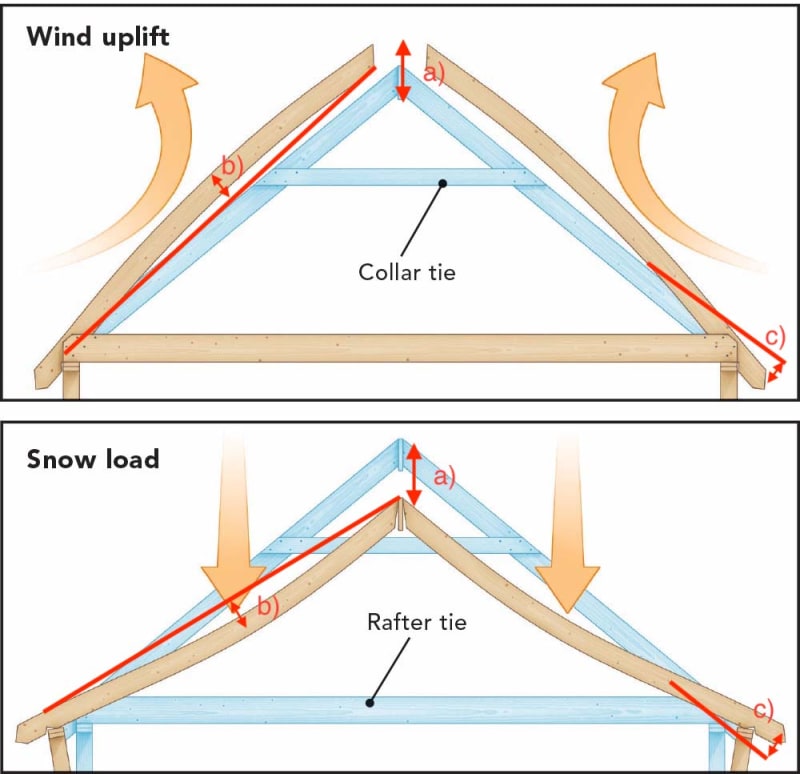ClearCalcs
Structural
Hello! We've had a question come up in our team and it's got us curious and looking to find out a bit more. What deflections would you typically consider in a roof assembly with rafter and/or collar ties? Some ideas here:
[ol a]
[li]Absolute deflection at ridge (for your L/ value, would you use L = total roof span?)[/li]
[li]Rafter deflection (would you use L/ based on total rafter span or based on span between wall/ridge & tie?)[/li]
[li]Deflection of roof eave (checked against 2x the L/ value since it's a cantilever)[/li]
[/ol]
I've added an image below for reference. Thanks so much!!
-Laurent

[ol a]
[li]Absolute deflection at ridge (for your L/ value, would you use L = total roof span?)[/li]
[li]Rafter deflection (would you use L/ based on total rafter span or based on span between wall/ridge & tie?)[/li]
[li]Deflection of roof eave (checked against 2x the L/ value since it's a cantilever)[/li]
[/ol]
I've added an image below for reference. Thanks so much!!
-Laurent

